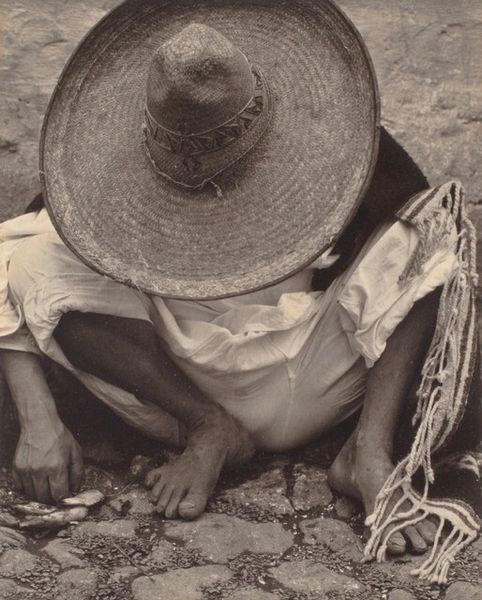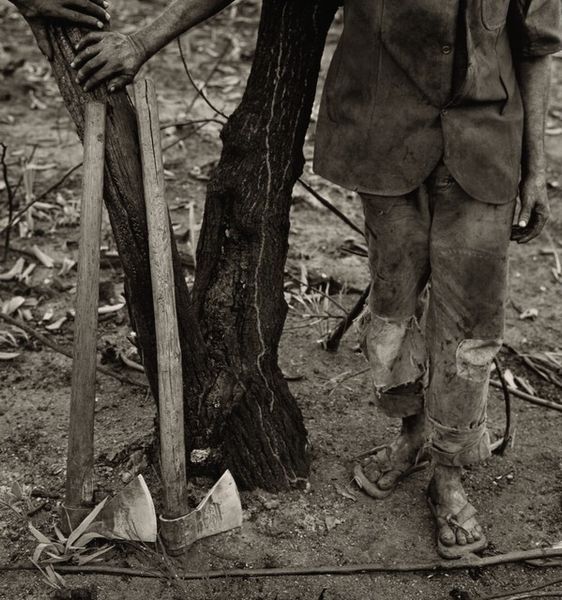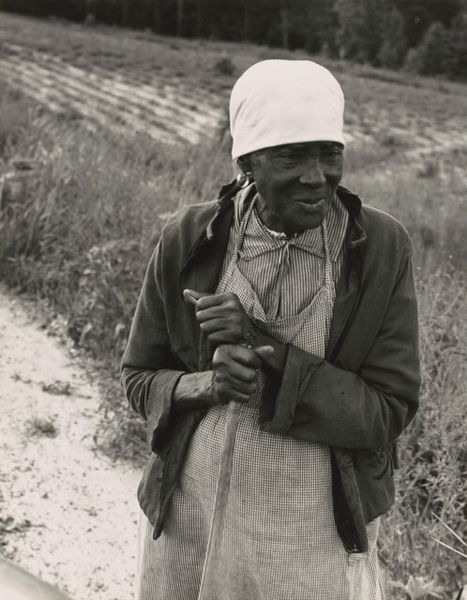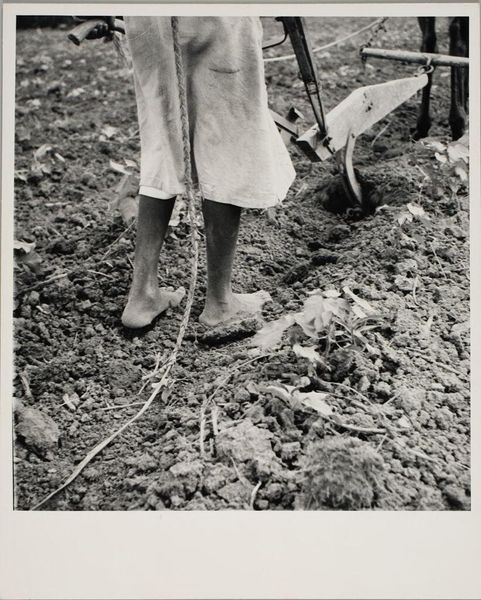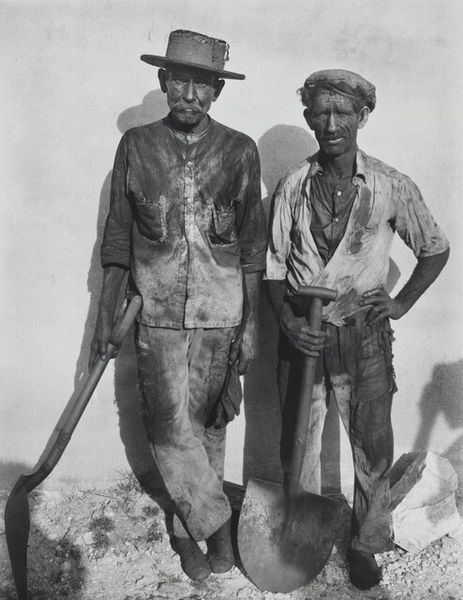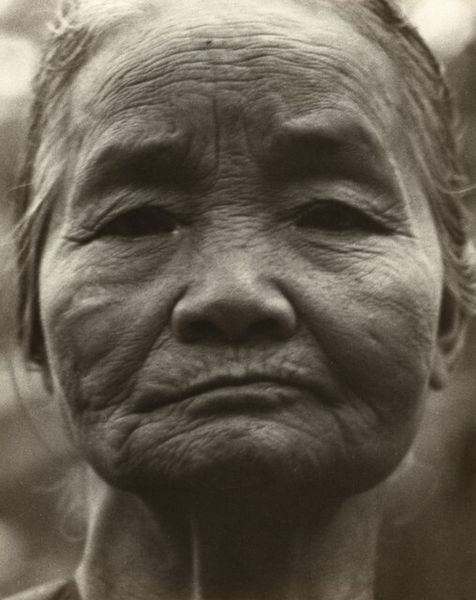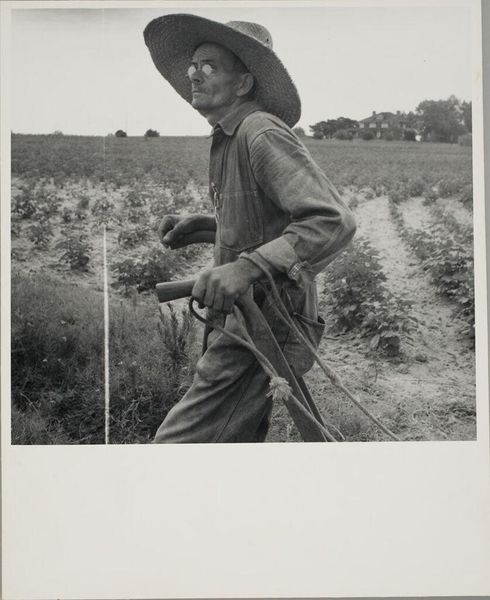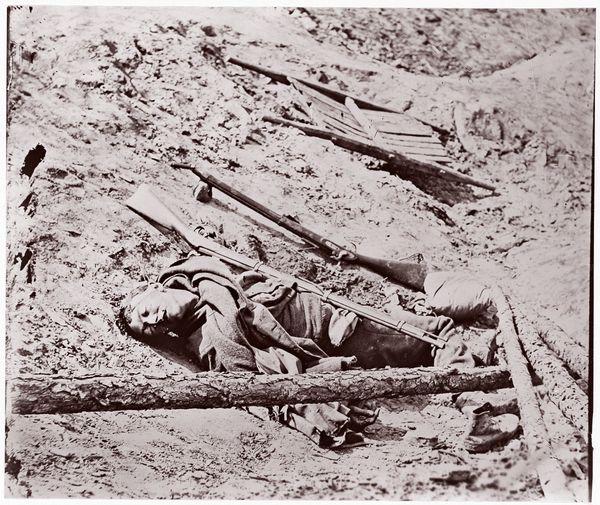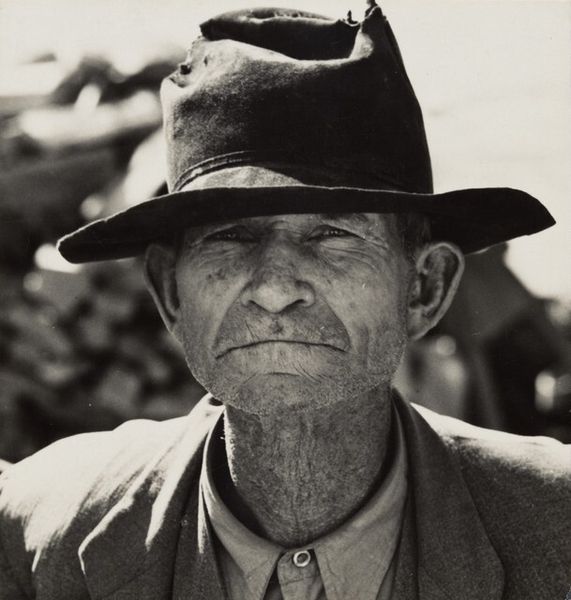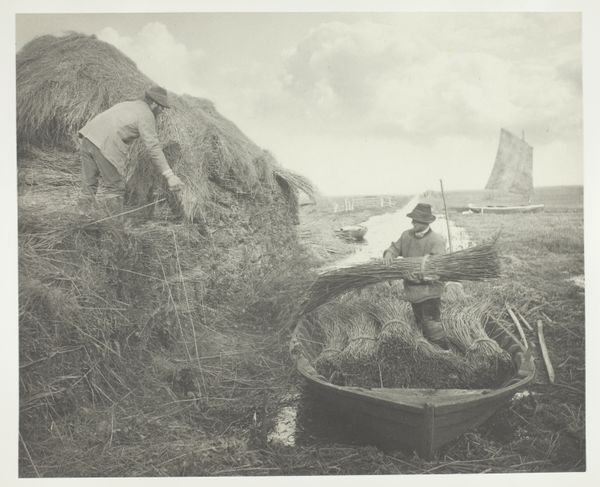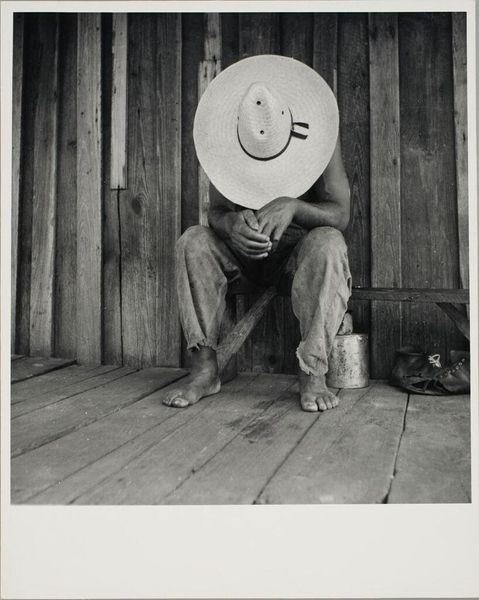
Mauro Ferreira das Neves Works as a Migrant Laborer Burning and Clearing the Land on the Farms around Grande Sertão Veredas National Park, Brazil Possibly 1999 - 2001
0:00
0:00
photography, gelatin-silver-print
#
portrait
#
black and white photography
#
social-realism
#
photography
#
black and white
#
gelatin-silver-print
#
monochrome photography
#
monochrome
#
realism
#
monochrome
Dimensions: image: 99.06 x 74.93 cm (39 x 29 1/2 in.) framed: 100.33 × 76.2 × 3.81 cm (39 1/2 × 30 × 1 1/2 in.)
Copyright: National Gallery of Art: CC0 1.0
Curator: Fazal Sheikh’s gelatin silver print, likely captured between 1999 and 2001, is titled "Mauro Ferreira das Neves Works as a Migrant Laborer Burning and Clearing the Land on the Farms around Grande Sertão Veredas National Park, Brazil." Editor: My first impression is one of deep exhaustion. There’s such a weight in his eyes, and the starkness of the landscape around him only amplifies that feeling. Curator: Absolutely. The work speaks powerfully to the realities of labor exploitation and environmental degradation in Brazil. Sheikh, through his portraiture, draws attention to the lives of those most impacted by the agricultural industry and the expansion of farmland, placing the figure of Mauro at the center of these overlapping socio-economic, political and environmental contexts. Editor: It’s interesting, isn't it, how Sheikh uses the simplicity of black and white to focus our attention. I find myself dwelling on the textures – the roughness of his skin, the wear on his clothes – and, most of all, the palpable stillness in the face of something larger. The image isn't simply an indictment; it’s a consideration, a question. Curator: Precisely. Sheikh often employs realism to emphasize the humanity and dignity of his subjects, framing individuals not as victims, but as witnesses to these histories. In its quiet way, this photograph brings forth essential questions about the relationships between power, environment, and individual agency. I see it as resisting visual tropes associated with documentary photography. Editor: Looking closer, the detail is remarkable, so raw, which forces me to consider my own distance. It makes one wonder, you know? If the camera wasn’t there, would his story still reach us? There's an unnerving truth in that silence. I like to see the beauty even when staring at hardship. The detail on his weathered face tells the whole story. Curator: These images serve as archives, speaking to the present. Thank you for giving the work the attention and consideration it is due. Editor: It’s been a profound pleasure – an awakening to see how we can build new bridges of solidarity and justice.
Comments
No comments
Be the first to comment and join the conversation on the ultimate creative platform.
